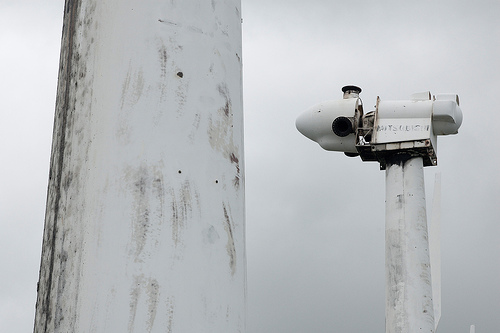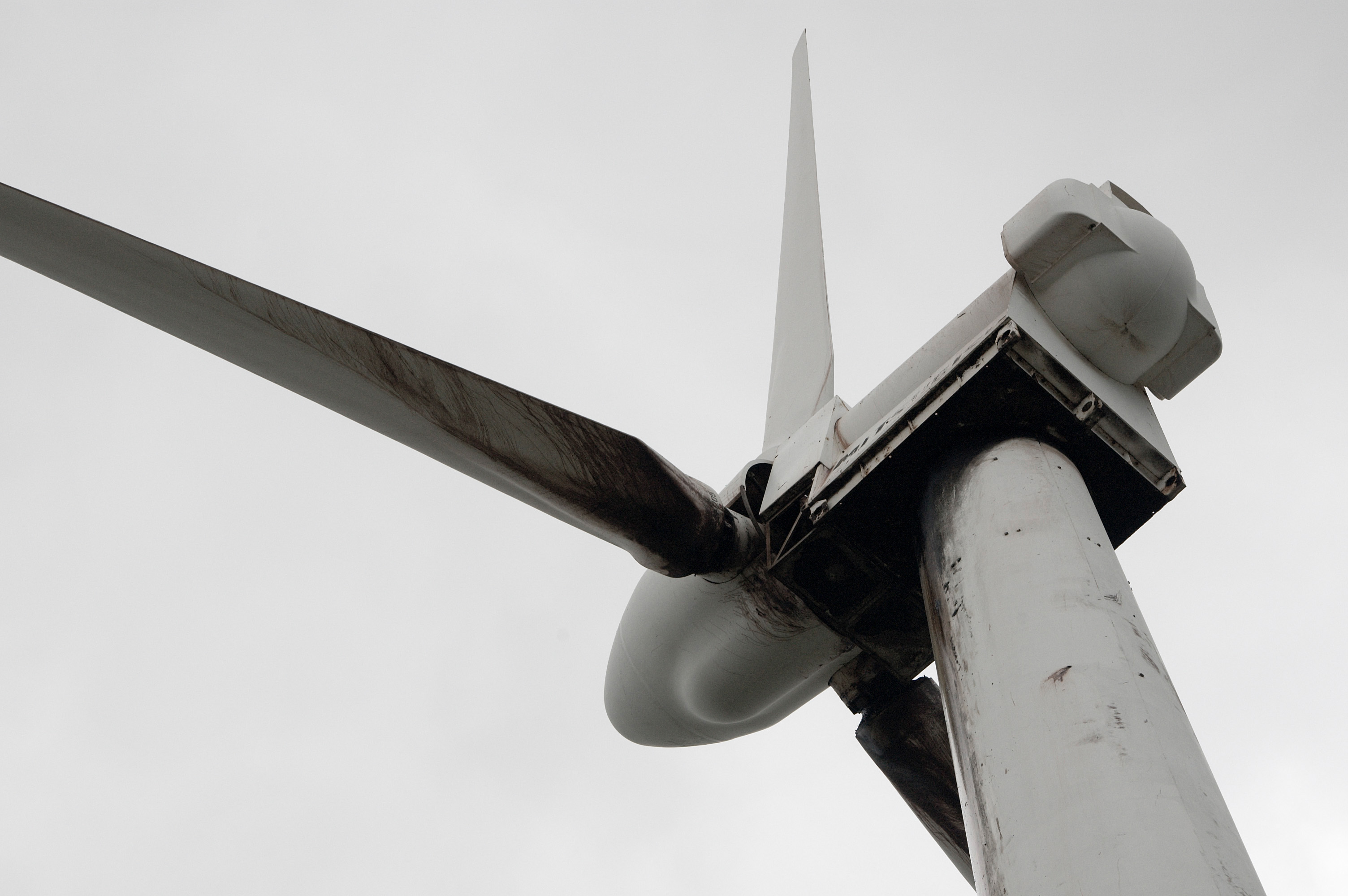Entries in wind farm setbacks (66)
5/10/10 May 4th shadow flicker and turbine noise AND Next Wind Siting Council Meeting has been CANCELLED---AND Will Horton Hear a Who? AND What's on the WSC Docket Today?
Click on the images below to watch wind turbine shadow flicker in the 36 turbine Butler Ridge project in Dodge County, Wisconsin. Each turbine in this video is 400 feet tall. Filmed on the morning of May 4th, 2010 en route to a Wind Siting Council meeting hosted at the home of council member Larry Wusch who lives in the Invenergy Forward Energy project located about twenty miles north of Butler Ridge.
This turbine in this video emitted a high pitched whistle as well as low pulsing jet sounds.
This video shows how long the turbine shadows are, and what shadow flicker looks like when it covers a field, a house and a barn
 THE NEXT WIND SITING COUNCIL MEETING IS CANCELLED FOR 9AM WEDNESDAY MAY 12 2010 AT THE PSC
THE NEXT WIND SITING COUNCIL MEETING IS CANCELLED FOR 9AM WEDNESDAY MAY 12 2010 AT THE PSC
Public Service Commission Building
610 North Whitney Way
Madison, Wisconsin

NOTE FROM THE BPWI RESEARCH NERD: For some, watching a Wind Siting Council Meeting is like watching paint dry. For others it's like watching people toss your future around in their hands. For the BPWI Research Nerd (who is working on a book about the experiences of wind farm residents in our state) it's a front row seat on the creation of siting standards that will either protect the people and avian species of our state, or protect the interests of wind developers, utilities and wind lobbyists.
Will residents of Wisconsin wind projects be heard?
SPOILER ALERT: Because of the composition of the WSC , the Research Nerd predicts the interests of the wind developers, utilities, and wind lobbyists will win out over the protection of the people and bats and birds of rural Wisconsin who will be living with the fallout of wind development.
Unless--- by some miracle---the PSC Horton Hears a Rural Wisconsin Who.
If you'd like to make your voice heard, CLICK HERE to leave a public comment on the Wind Siting Council Docket. What you post will become public record. There is no limit to the number of posts you can make. You are free to post opinion, articles, documents, and video links. Anything that you would like the wind siting council to consider.
It's Better Plan's understanding that though some of the council members do pay attention to the docket, there is no requirement that the council read any of the posts.
WHAT'S ON THE WSC DOCKET TODAY?
This "energy sprawl" of giant turbines and pylons will require far greater amounts of concrete and steel than conventional power plants—figure on anywhere from 870 to 956 cubic feet of concrete per megawatt of electricity and 460 tons of steel (32 times more concrete and 139 times as much steel as a gas-fired plant).
From a review of "Power Hungry" by Robert Bryce SOURCE: The Wall Street Journal
ON THE WSC DOCKET: Better Plan thanks Curt Hilgenberg and Julie Bixby-Wendt for taking the time to post to the docket.
This Post from Curt Hilgenberg, Town of Holland, Brown County includes an article about wind power By Robert Bryce in the Wall Street Journal. The quote above is from Bruce's book, "Power Hungry", released in April.
March 1, 2010 by Robert Bryce in Wall Street Journal
People living near turbines increasingly report sleep deprivation, headaches and vertigo. The wind lobby says there's no proof
Imagine this scenario: The oil and gas industry launches an aggressive global drilling program with a new type of well. Thousands of these new wells, once operational, emit a noxious odor so offensive that many of the people living within a mile of them are kept awake at night. Some are even forced to move out of their homes. It's easy to predict the reaction: denunciations of the industry, countless lawsuits, and congressional investigations.
Now substitute wind for oil and gas and consider the noise complaints being lodged against wind projects around the world.
The Obama administration has made the increased use of wind power to generate electricity a top priority. In 2009 alone, U.S. wind generation capacity increased by 39%. But more wind power means more giant turbines closer to more people. And if current trends continue, that spells trouble.
In 2007, a phalanx of wind turbines were built around Charlie Porter's property in rural northern Missouri. Soon, Mr. Porter began to have trouble sleeping. So did his wife and daughter. The noise, he told me, made sleeping almost impossible. "We tried everything-earplugs, leaving the TV station on all night." Nothing worked. Late last year he moved his family off their 20-acre farm.
Mr. Porter's story is no isolated event. Rural residents in Texas, Maine, Pennsylvania, Oregon, New York, Minnesota, Wisconsin, Canada, New Zealand, Australia, France and England have been complaining about the noise from wind turbines, particularly about sleep deprivation.
Dozens of news stories-most of them published in rural newspapers-have documented the problem.
I've spoken to nine other people in New York, Wisconsin, Ontario, New Zealand, Nova Scotia and England who live, or lived, near wind turbines. All complained of the noise, with sleep deprivation being the most common complaint. For example, Janet Warren, who raises sheep near Makara, New Zealand, told me via email that the turbines near her home emit "continuous noise and vibration," which disturb her sleep and are causing "loss of concentration, irritability, and short-term memory effects."
Complaints about sleep disruption-as well as the deleterious health effects caused by the pulsing, low-frequency noise emitted by the giant turbines-are a central element of an emerging citizen backlash against the booming global wind industry.
Lawsuits that focus on noise pollution are now pending in Maine, Pennsylvania and New Zealand. In New Zealand, more than 750 complaints have been lodged against a large wind project near Makara since it began operating last April. The European Platform Against Windfarms lists 388 groups in 20 European countries. Canada has more than two dozen antiwind groups. In the U.S. there are about 100 such groups, and state legislators in Vermont recently introduced a bill that will require wind turbines be located no closer than 1.25 miles from any residence.
In theory, big wind projects should only be built in desolate areas. But the reality is that many turbines are being installed close to homes. Wind developers put a turbine within 550 meters of Mr. Porter's house. Hal Graham, a retired office manager in Cohocton, N.Y., complains about the noise pollution caused by a turbine 300 meters from his home. Tony Moyer, a plumbing superintendent in Eden, Wis., grumbles about the noise generated by three turbines built within 425 meters of his house.
Doctors and acoustics experts from the U.S. to Australia report a raft of symptoms that they blame on wind turbine noise, including sleep disturbance, headaches and vertigo. Dr. Nina Pierpont, a pediatrician in Malone, N.Y., has studied 36 people affected by wind turbine noise since 2004 at her own expense.
The people she interviewed were widely dispersed; they lived in the U.S., Canada, England, Ireland and Italy. She found that the collection of symptoms she calls "wind turbine syndrome" disappeared as soon as people moved out of their noise-affected homes and into new locations at least five miles from any turbines.
Across the border, Ontario-based orthopedic surgeon Dr. Robert McMurtry has been researching wind turbine noise for the past 18 months. Dr. McMurtry, a fellow of the Royal College of Physicians and Surgeons of Canada, counts more than 100 people in Ontario he believes are experiencing adverse effects from turbine noise. "It has compromised their health," he says.
The wind lobby has publicly rejected these claims. In December, the American Wind Energy Association in conjunction with the Canadian Wind Energy Association, issued a report titled "Wind Turbine Sound and Health Effects: An Expert Review Panel."
It declared: "There is no evidence that the audible or sub-audible sounds emitted by wind turbines have any direct adverse physiological effects." It also suggested that some of the symptoms being attributed to wind turbine noise were likely psychosomatic and asserted that the vibrations from the turbines are "too weak to be detected by, or to affect, humans."
Yet the report also noted that in "the area of wind turbine health effects, no case-control or cohort studies have been conducted as of this date." True enough-but it means there are no studies to prove or disprove the case. It also says that "a small number of sensitive people" may be "stressed" by wind turbine noise and suffer sleep deprivation. But who gets to define "sensitive" and "small number"? And if turbine noise and sleep disturbance aren't problems, then why are people in so many different locations complaining in almost identical ways? Such questions are only going to be pressed with more urgency in the future.
By 2030, environmental and lobby groups are pushing for the U.S. to produce 20% of its electricity from wind. According to the Department of Energy, meeting that goal will require the U.S. to have about 300,000 megawatts of wind capacity, an eightfold increase over current levels. Installing tens of thousands of new turbines inevitably means they'll be located closer to populated areas.
The health effects of low-frequency noise on humans are not well understood. The noise in question often occurs at, or below, decibel levels that are commonly considered a public nuisance. And detecting low-frequency noise requires sophisticated acoustic gear. For all of these reasons, this issue should be investigated. If policy makers are serious about considering all of the impacts of "green" energy, then an impartial, international study of the effects of wind turbine noise should be undertaken without delay.
Mr. Bryce is the managing editor of Energy Tribune. His fourth book, "Power Hungry: The Myths of 'Green' Energy and the Real Fuels of the Future," will be published in April by PublicAffairs.
Web link: http://online.wsj.com/article/SB100014240527487042...
POST TO THE WSC DOCKET FROM
Julie Bixby-Wendt
Greenleaf, Wisconsin
Submitted May 8, 2010
Below are my comments that I emailed to Fox 11 and other news stations, newspapers and State representatives:
I watched your story about the "Wind Wars" going on in the Town of Morrison. I am a resident of the town and wondered if you are aware that property owners who have vacant land next to a property owner who has signed an easement for a wind turbine are receiving absolutely no compensation, even though they are basically taking away 500 feet of our land at every side where a turbine will be placed, because the 1,000-foot setback is from a dwelling rather than the property line.
My husband and I own 40 acres of vacant land. There are proposed wind turbines on property next to at least two sides of our land, and they only have to be 500 feet away from our property.
We have kept this property with the intention that our children might someday build their homes on this land. Because any dwelling will have to be placed 1,000 feet away from a turbine, they are effectively taking away at least 500 feet of our land without any compensation to us.
If they make the setbacks from a dwelling larger, that will mean more of our property will be stolen from us. What happened to our encroachment rights?
Every time I hear someone say how much money this wind farm could bring to property owners, it makes me very upset!
I would like to hear someone reporting on how our state and the power companies are stealing from property owners and shoving these wind turbines down our throats! They should have to get a vote from a town as to whether or not they would like to host a wind farm before they can even come into a town and sneak around getting easements from anyone who will sign up.
Also, even though the people in our town have to live with the wind turbines, the town will receive less money than the county for having them here (town gets 1/3, county gets 2/3).
Even their sneaking around is underhanded.
We were approached to host a wind turbine and were told all of our neighbors were signing up so we might as well get in on the action. They even mentioned names of our neighboring property owners who had signed up, so we were somewhat interested...until I took the contract to an attorney who told me it was a terrible contract.
So now, because we are not hosting a turbine we are not receiving any money, and they are taking some of our land anyway because the setbacks are not the same from the property line as from a dwelling. This just isn't right!
Besides the actions our town is taking (apparently the state has made it impossible for a town to do much against wind turbines), we just don`t know who to contact who can help us, and others like us, who are being robbed.
I don`t know when alternative energy became more important than people, but our government is definitely not standing up for the people. If you have any suggestions as to where we can get help with this, it would be deeply appreciated!
I affirm that these comments are true and correct to the best of my knowledge and belief.
Julie Bixby-Wendt
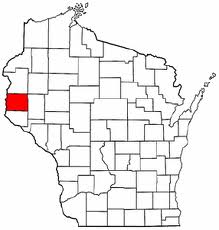
Want to keep up with what's going on with the wind siting council? For some it's like watching paint dry, for others it's watching people toss your future around in their hands
Remember to check the docket
Click here to visit the Public Service Commission of Wisconsin website
Type in Docket number 1-AC-231
WHAT'S THE LATEST ON THE DOCKET?
EXTRA CREDIT: Click on the image above to hear another wind turbine that whistles because of a faulty blade.
5/6/10 The sad fate of a home in a Wisconsin Wind Farm: Sheriff sells it to New York bank at a price below the opening bid.
 NOTE FROM THE BPWI RESEARCH NERD: Better Plan has been following the Wirtz family story since our first interview with them in June of 2009 on the day they decided to abandon their home because of noise and vibration from the turbine in the photo below.
NOTE FROM THE BPWI RESEARCH NERD: Better Plan has been following the Wirtz family story since our first interview with them in June of 2009 on the day they decided to abandon their home because of noise and vibration from the turbine in the photo below.
You can read our first interview with the family by CLICKING HERE
The Wirtz family had been living in and renovating the 100 year old home pictured below for 12 years before Invenergy began erecting 86 industrial scale wind turbines. The 400 foot structures are sited as close as 1000 feet from non-participating homes.The turbine in this photo is located 1250 feet from the Wirtz home.
They were unable to find anyone willing to purchase the property and say they were unable to stay because of the deterioration of the family's health due to loss of sustained sleep because of tubine noise and vibration.
We spoke with Ann Wirtz, who attended the May 4th Wind Siting Council meeting at the home of council member Larry Wunsh. Wunsch, a fire fighter, lives in the same Invenergy project and spoke to the council about the turbine noise which keeps he and his wife awake at night.
At the same time Wunsch was speaking, Ann told us her home was being auctioned at a sheriff's sale. Though the home had appraised for $320,000 in 2007, the opening bid on the house was $107,000.
Even at that price it found no local buyers. The Bank of New York Mellon took ownership at a price of $106,740.
Better Plan was glad to hear from Ann that the Wirtz family's health has greatly improved since they moved to the village of Oakfield.
Both Ann and Jason Wirtz grew up in rural Wisconsin and intended to raise their children in their 100 year old farmhouse.
Both decided it was not worth the cost of their family's health to remain in the Invenergy Forward Energy wind project, even if it meant losing all they had.
They do have their health, but what a price they have had to pay.
Most members of Wisconsin's wind siting council continue to claim there is no effect on property value when wind turbines are built so near a home.
They continue to claim there are no negative health effects from living too close to wind turbines.
The Wirtz family begs to differ.
Council member Larry Wunsch's home is now for sale.
The closest turbine to his door is 1100 feet away.
The Wind Siting Council will be creating siting guidelines for wind turbines for the entire state of Wisconsin.
More than two thirds of the council members have direct or indirect financial interest in the outcome of these rules.
CLICK HERE TO SEE WHO IS ON THE WIND SITING COUNCIL
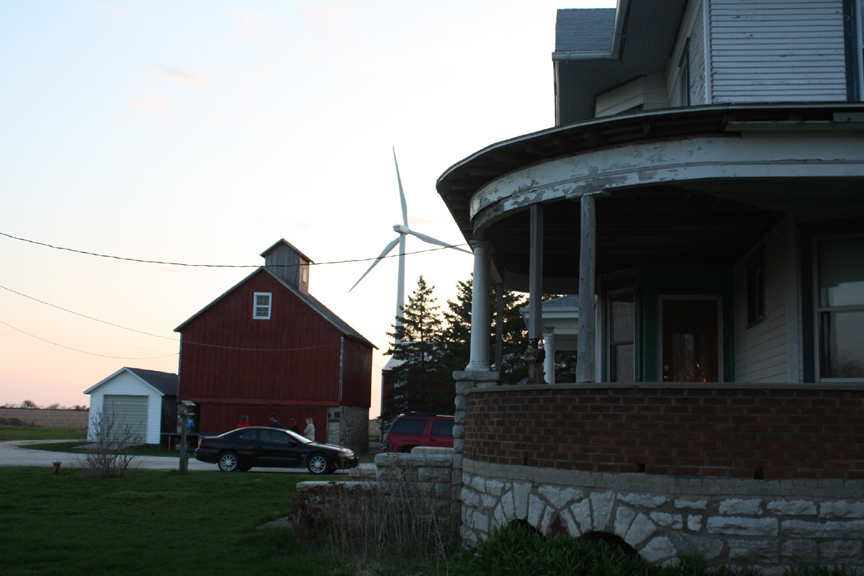
WIND FARM PROPERTY SOLD AT SHERIFF'S SALE
SOURCE: The Daily Reporter, dailyreporter.com
May 6, 2010
By Paul Snyder
The attorney representing two Oakfield residents in a case against Chicago-based Invenergy LLC wants the results of a sheriff’s sale this week to convince the state to review the case.
Madison-based attorney Ed Marion on Thursday sent a letter to the Public Service Commission of Wisconsin, requesting it consider new facts in Ann and Jason Wirtz’s case against Invenergy.
The Wirtzes abandoned their home in Brownsville last year after Invenergy’s Forward Energy Wind Center became operational in 2008. The property, appraised at $320,000 in 2007, sold to the Bank of New York Mellon at a sheriff’s sale Tuesday for $106,740.
“I hope it will influence the commission to look favorably, at least, at giving us our day in court,” Marion said.
The Wirtzes want the PSC to force Invenergy to compensate the family for their losses, although no specific amount is named.
Marion said the PSC has not yet made a decision as to whether it will review the case.
4/23/10 What's all this noise about turbine noise? Whose word will you take? Someone who profits from putting turbines close to people's homes, or someone who is living with turbine noise every day?
Veteran noise engineer George Kamperman, Board Certified in Noise Control Engineering by the American Institute of Noise Control Engineering, wrote the following commentary after listening to a video clip (above) recorded by Larry Wunsch who lives near the Town of Byron in Fond du Lac County, Wisconsin. The closest turbine to his home is 1100 feet away. Wunsch is a firefighter and also happens to be a member of Wisconsin's Wind Siting Council, a fifteen member group who are now at work on creating guidelines for siting turbines in our state.
There is a must-see-and-hear 9 minute DVD by Larry Wunsch at his home in Byron, Wisconsin. Turn up the volume on your computer and listen either through earphones with good uniform base response, or listen from a full frequency range sound system.
You may be shocked by what you hear. The wind turbines make a roaring sound like a jet aircraft. The wind turbines radiate an excessive amount of low frequency energy, and this is the primary reason for our new approach (see How Loud Is Too Loud?) for determining wind turbine setback from dwellings.
Whenever you read about noise levels in the media, the decibel (dB) numbers are frequency weighted (dBA). The term is the “A-weighted” sound level. This frequency weighting discriminates against low frequency sounds, somewhat similar to human hearing response at low sound levels. The wind turbine industry has taken advantage of the phenomenon to show wind turbines produce sound levels no higher than the sound from “a gentle breeze rustling leaves of a tree” or “a small flowing stream” or “the refrigerator in your kitchen,” to cite just some of the examples argued by the wind turbine lobby. These examples are all plausible, and the industry probably has data to show it to be true.
What’s wrong with this picture? The wind industry examples definitely do not sound like the jet engine noise outside the home of Larry Wunsch! The problem is that wind turbines generate far more low frequency noise than high frequency noise where dBA is most sensitive. This is a dirty little secret the wind turbine industry has been hiding from the public.
To meet this challenge we have added (again, see How Loud Is Too Loud?) a requirement that both dBA and dBC noise data be published by the wind industry. The dBC frequency scale has a flat, uniform response throughout the audible range and thus is a better measure of any noise rich in low frequency sound. We propose wind turbine setbacks must meet both dBA and dBC limits.
I did an actual instrumentation analysis of the Larry Wunsch (YouTube) turbine noise recorded outside his front door. My measured noise characteristics agreed with the manufacturer’s claimed noise emission. Both sets of data show excessive low frequency noise outside the Wunsch home, and they show the dBC (broadband) turbine noise to be 13 dB higher than the dBA (high frequency) turbine noise.
Whenever dBC results exceed dBA results, it is a clear indication that low frequency noise not measured by dBA is in fact present. Noise engineers know this; the general public does not. The industry example of rustling leaves, above, would necessiate dBC one dB ldBA lower than dBA, which is clearly not the case outside Mr. Wunsch’s front door.
Behold the wind industry chicanery (deceit) when it pretends rustling leaves = whispering turbines. Rubbish!
Think of dBA and dBC as tone controls for listening to your favorite music. The treble control being the dBA, and the bass control being the dBC. A uniform random noise is often referred to as white noise. When you reproduce white noise and turn down the treble control (dBA) for reduced highs, and turn up the base control (dBC) for more “boom,” you end up with sound close to the wind turbine noise spectrum.
Or consider this illustration. All propellers produce what’s often called a “haystack” spectrum, where the top of the haystack (peak energy in the spectrum) is determined primarily by the diameter of the propeller circle (twice a blade radius). Think of the whining sound of small model airplanes. Next, think of the engine sound of an ultralight (single-person) aircraft. In this case the engine sound has a lower frequency than the remote-control model airplane. Next, think of the engine sound of a standard, single-engine plane. A Cessna or Piper Cub, let’s say. The engine sound is lower than the ultralight’s. Finally, imagine a B-36 bomber aircraft, where the engine pitch is lower yet.
The point being, as the propeller-sweep-circle-diameter increases, the top of the haystack pitch, or frequency, shifts downward.
Now, graduate to wind turbines. The biggest of them all. Huge propellers sweeping an enormous circle. Propellers so big that the peak of the haystack (peak sound energy) is in the 10 and 20 Hz range–and the peak is no longer audible. Even so, turbine propellers generate plenty of sound energy on the high frequency side, sliding down (increasing frequency) the high frequency side of the haystack, with the result that wind turbine sound spectrum continues to be very audible indeed.
The standard noise meter has had the same two, dBA and dBC, sound weightings since the instrument was invented (around 1940, I believe). The peak in the haystack spectrum for wind turbines is below the frequency range of both human hearing and the range of a standard sound-level meter (10 Hz to 20,000 Hz). In fact, the sound-level meter dBA response becomes increasingly less sensitive to sounds below 500 Hz (2 octaves above middle C on the piano), and has a uniform sensitivity at higher frequencies above 500 Hz. The dBC response, on the other hand, remains uniform thoughout all frequencies above 32 Hz (equivalent to the lowest note on a grand piano) to the upper limit of the instrument (which is 20,000 Hz). The low frequency roll-off below 32 Hz is standardized down to 10 Hz. Thus, this instrument is somewhat useful for near infrasound.
Wind turbines, by the way, do indeed produce infrasound, contrary to misleading statements by some acousticians. Since there is no ANSI (American National Standards Institute) or IEC (International Electrotechnical Commission) standard suitable for dealing with wind turbine infrasound, Rick James and I have sidestepped the issue for the time being in our “How To” guide. Rural America will be flooded with wind turbines of questionable value long before a consensus emerges among noise engineers on dealing with wind turbine infrasound. Individuals and communities who are understandably suffering from the infrasound and low frequency noise of turbines cannot wait for ANSI and the IEC to catch up with their dilemma. That’s why my colleague, Rick James, and I have jumped in and made do with the best off-the-shelf technology, instrumentation, and international noise standards currently available. When health and homes are under assault, as the research of Dr. Pierpont and many others makes clear they are, it would be unconscionable for someone with my training to look the other way.
Somehow we need to convince government... that wind turbines must be kept away from people’s homes. That many of these wind farms are in areas of marginal wind energy value makes this even more tragic.
-George Kamperman
3/31/10 No Foolin'! Second Wind Siting Council Meeting Tomorrow, April 1st, and "What's on the WSC Docket?"
 The next Wind Siting Council meeting is Thursday, April 1, 2010 at 1:30 pm
The next Wind Siting Council meeting is Thursday, April 1, 2010 at 1:30 pm
-Developing guiding principles- Developer/owner responsibility
Public Service Commission Building
610 North Whitney Way, Madison, Wisconsin
CLICK HERE to download a copy of the agenda
CLICK HERE to find out who is on the siting council
|
WHAT'S ON THE WIND SITING COUNCIL (WSC) DOCKET TODAY? Visit the docket by CLICKING HERE. The docket number to enter is 1-AC-231 Public comment from Brown County resident regarding setbacks being measured from property lines, March 30, 2010 Proper siting of industrial wind turbines is perhaps the most crucial and overlooked aspect of the wind power debate. The turbines proposed for the Ledge Wind project and other state projects are industrial machines - they have no business being placed near people's homes, workplaces, schools, or farms. It is also imperative that setbacks are measured from property lines, not simply from the center of buildings. People live not just in their homes, but also on their lands. A person's plans for their property should not be impeded because an industrial turbine is placed too close to their lotline. To limit the health consequences and maximize safety, industrial wind turbines should be sited, at a BARE minimum, no closer than 1 km from property lines. Even better would be 2 km. To do any less is reprehensible and irresponsible, and risks the health and safety of Wisconsin residents. I affirm that these comments are true and correct to the best of my knowledge and belief. Public comment from Brown County resident regarding WSC record keeping and wildlife concerns: March 31, 2010 I attended the first meeting of the Wind Siting Council and was concerned that no secretary of the proceedings had bee[n] selected. In a recent call to Deborah Erwin, I was happy to hear that minutes of the meeting would be taken and put on the PSC website. Also, efforts are being made to broadcast the meetings through the internet again on the PSC website. Thank you Deborah for arranging full coverage of the panel's discussions. I affirm that these comments are true and correct to the best of my knowledge and belief. |
2/16/10: When you are old and out of shape.... which for industrial wind turbines means past the age of 20, but the contract with the wind developer goes on and on
CLICK HERE to read about Wind Energy's Ghosts
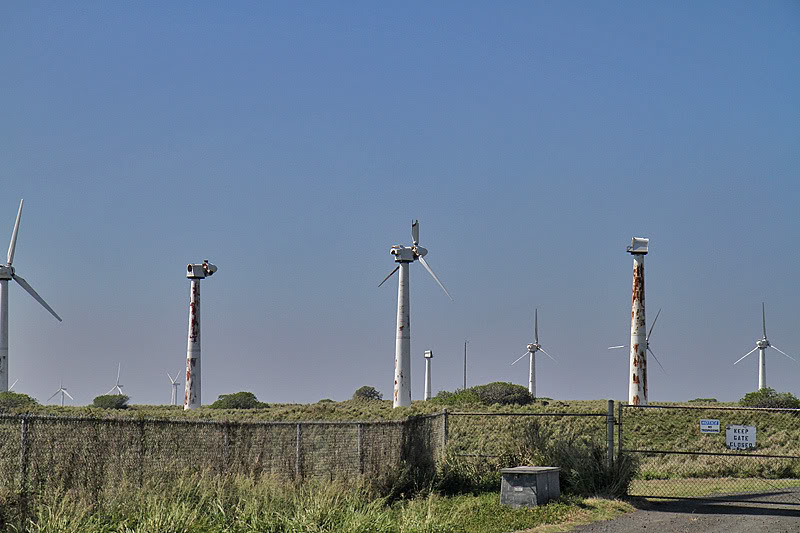
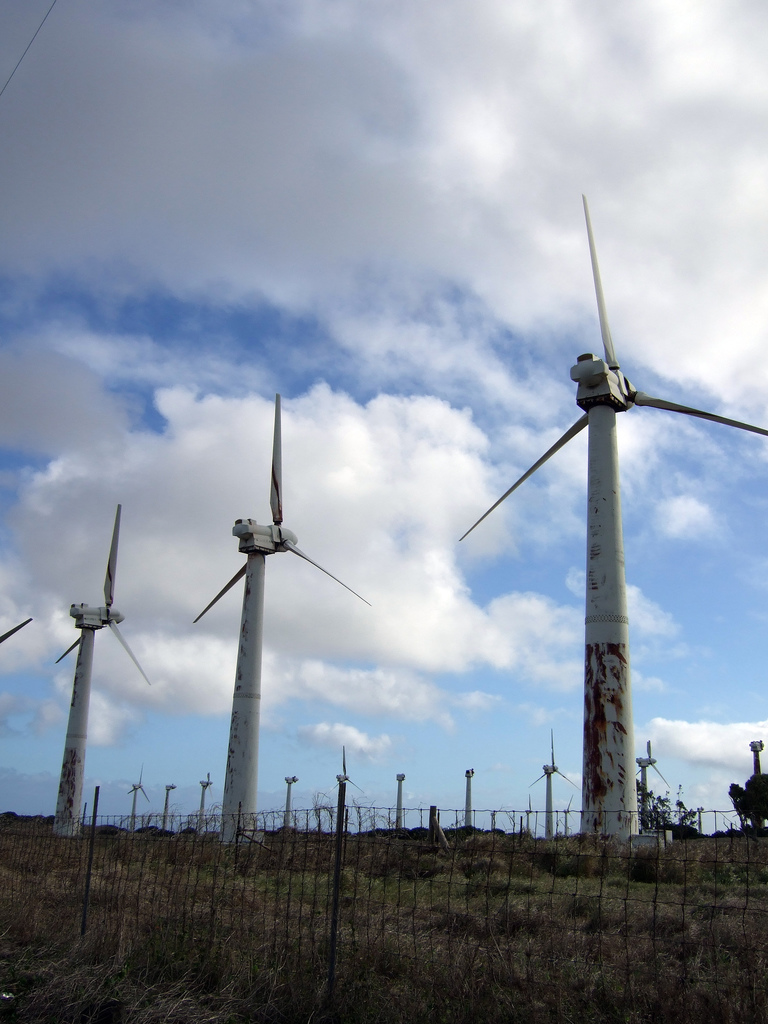
Photos of an abandoned wind farm on the island of Hawaii
